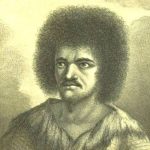
Country Overview:
The islands were part of the UK’s Jamaican colony until 1962, when they assumed the status of a separate crown colony upon Jamaica’s independence. The governor of The Bahamas oversaw affairs from 1965 to 1973. With Bahamian independence, the islands received a separate governor in 1973. Although independence was agreed upon for 1982, the policy was reversed and the islands remain a British overseas territory.
Location:
Caribbean, two island groups in the North Atlantic Ocean, southeast of The Bahamas, north of Haiti
Geographic coordinates:
21 45 N, 71 35 W
Area:
Total: 430 sq km, land: 430 sq km, water: 0 sq km
Area – Comparative:
2.5 times the size of Washington, DC
Land boundaries:
0 km
Coastline:
389 km
Climate:
Tropical; marine; moderated by trade winds; sunny and relatively dry
Terrain:
Low, flat limestone; extensive marshes and mangrove swamps
Elevation extremes:
Caribbean Sea 0 m
Highest Point:
Blue Hills 49 m
Natural Resources:
Spiny lobster, conch
Population:
22,352 (July 2008 est.)
Nationality:
None
Nationality:
None
Ethnic groups:
Black 90%, mixed, European, or North American 10%
Religions:
Baptist 40%, Anglican 18%, Methodist 16%, Church of God 12%, other 14% (1990)
Languages:
English (official)
Country Name:
Turks and Caicos Islands
Government Type:
NA overseas territory of the UK
Capital Name:
Grand Turk (Cockburn Town)
Independence:
Grand Turk (Cockburn Town)
National Holiday:
Constitution Day, 30 August (1976)
Constitution:
Turks and Caicos Islands Constitution Order 2006 (effective 9 August 2006)
Legal System:
Based on laws of England and Wales, with a few adopted from Jamaica and The Bahamas
Executive Branch:
Chief of state: Queen ELIZABETH II (since 6 February 1952); represented by Governor Gordon WETHERELL (since 5 August 2008)
Head of Government:
Premier Michael Eugene MISICK (chief minister since 15 August 2003, sworn in as premier on 9 August 2006); note – the office of premier was created in the 2006 constitution
Cabinet:
Cabinet consists of the governor, the premier, six ministers appointed by the governor from among the members of the House of Assembly, and the attorney general
Elections:
Elections: the monarch is hereditary; governor appointed by the monarch; following legislative elections, the leader of the majority party is appointed premier by the governor





